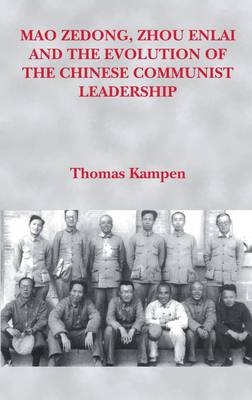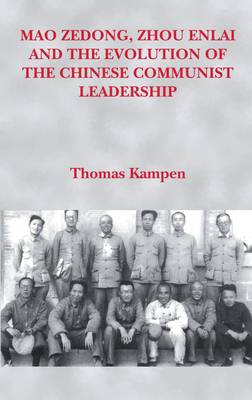
En raison d'une grêve chez bpost, votre commande pourrait être retardée. Vous avez besoin d’un livre rapidement ? Nos magasins vous accueillent à bras ouverts !
- Retrait gratuit dans votre magasin Club
- 7.000.000 titres dans notre catalogue
- Payer en toute sécurité
- Toujours un magasin près de chez vous
En raison de la grêve chez bpost, votre commande pourrait être retardée. Vous avez besoin d’un livre rapidement ? Nos magasins vous accueillent à bras ouverts !
- Retrait gratuit dans votre magasin Club
- 7.000.0000 titres dans notre catalogue
- Payer en toute sécurité
- Toujours un magasin près de chez vous
Mao Zedong, Zhou Enlai and the Evolution of the Chinese Communist Leadership
Thomas Kampen
Livre broché | Anglais
19,95 €
+ 39 points
Format
Description
Analyses the power struggles within the leadership of the Chinese Communist Party between 1931, when several Party leaders left Shanghai and entered the Jiangxi Soviet, and 1945, by which time Mao Zedong, Liu Shaoqi and Zhou Enlai had emerged as senior CCP leaders. In 1949 they established the People's Republic of China and ruled it for several decades.
Based on new Chinese sources, this study challenges long-established views that Mao Zedong became CCP leader during the Long March (1934-35) and that by 1935 the CCP was independent of the Comintern in Moscow. The result is a critique not only of official Chinese historiography but also of Western (especially US) scholarship that all future histories of the rise of the CCP and power struggles within the PRC will need to take into account.Spécifications
Parties prenantes
- Auteur(s) :
- Editeur:
Contenu
- Nombre de pages :
- 160
- Langue:
- Anglais
Caractéristiques
- EAN:
- 9788787062763
- Date de parution :
- 31-05-03
- Format:
- Livre broché
- Format numérique:
- Trade paperback (VS)
- Dimensions :
- 164 mm x 211 mm
- Poids :
- 208 g

Les avis
Nous publions uniquement les avis qui respectent les conditions requises. Consultez nos conditions pour les avis.






